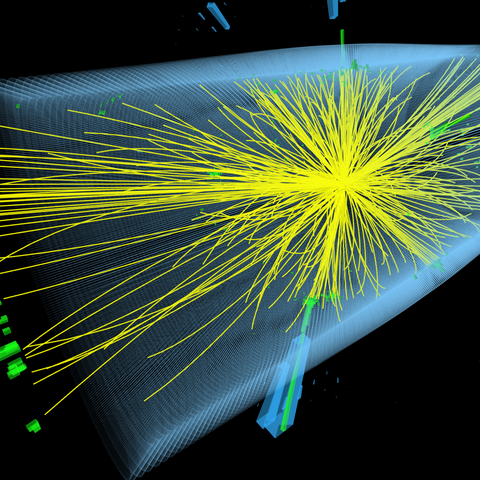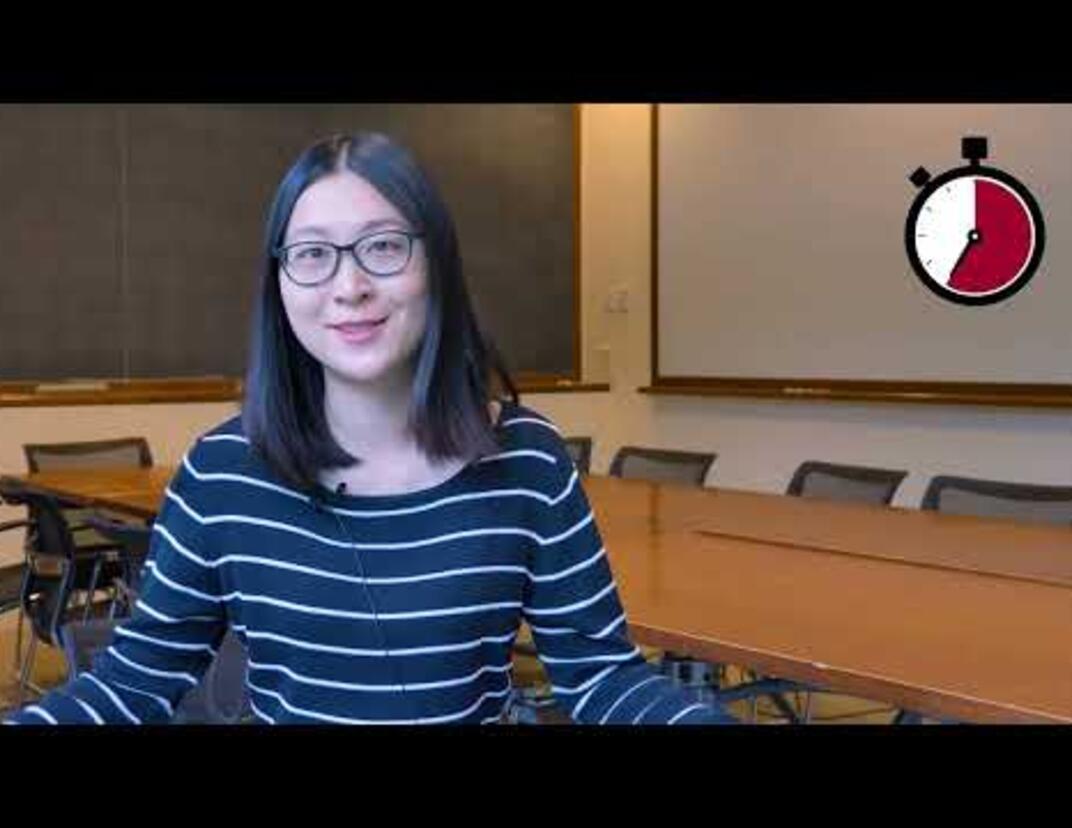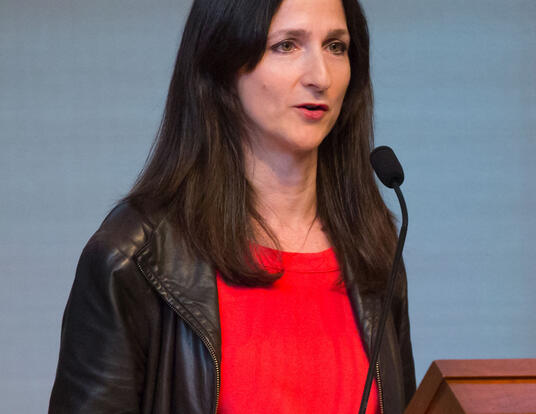Massive Discovery
Evidence of new supermassive black hole in nearest galaxy has implications for galactic evolution
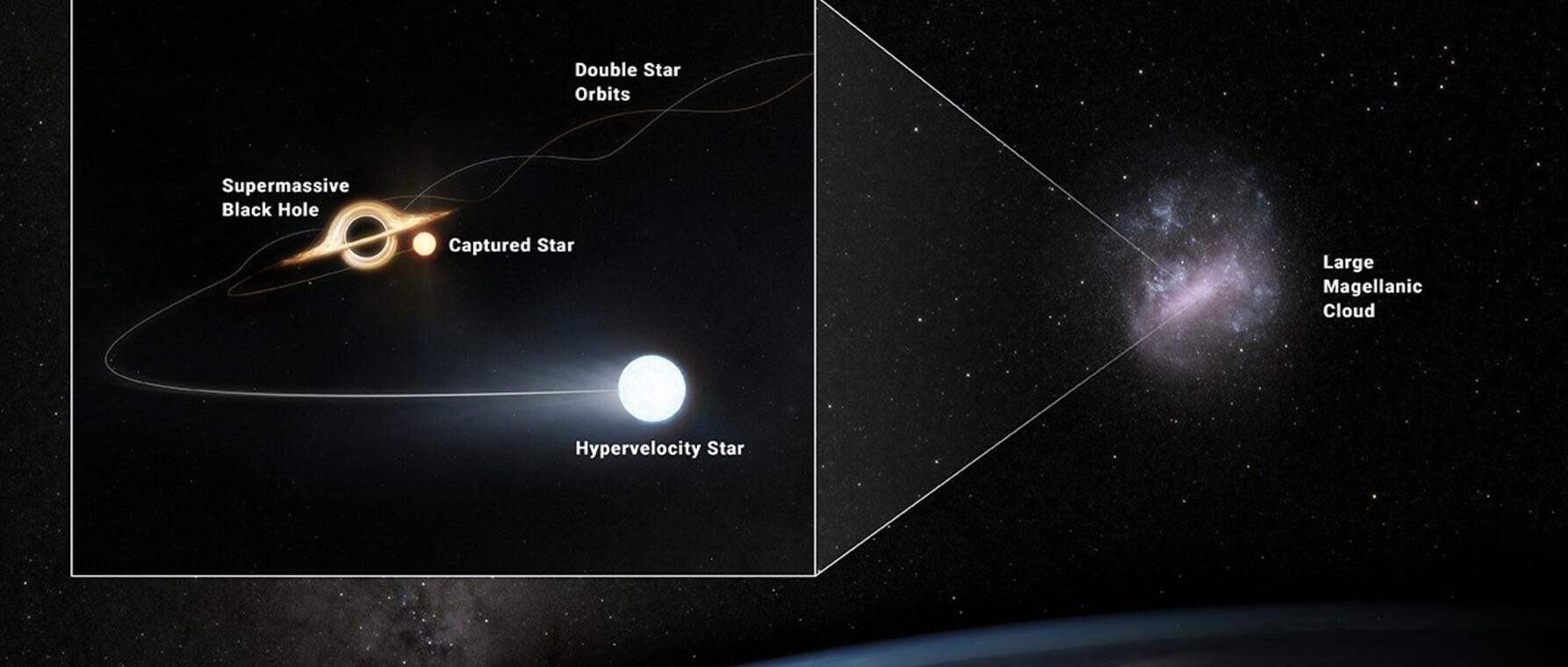
Research at Risk: Since World War II, universities have worked with the federal government to create an innovation ecosystem that has yielded life-changing progress. Now much of that work may be halted as funding is withdrawn. Find out more about the threats to medical, engineering, and scientific research, as well as how Harvard is fighting to preserve this work—and the University's core values.
Jesse Han was, appropriately, in the sky when he made a discovery that could change the way astronomers understand stars and galaxies. Flying home from Pasadena, California, where he and colleague Kareem El-Badry were collaborating, the Harvard PhD student in astronomy labored over calculations that didn't make sense. The trajectory of a star he was tracking didn't project to the supermassive black hole at the center of the Milky Way galaxy, as it was supposed to. It was going in an entirely different direction. That couldn't be right.
Could it?
"Purely out of curiosity, I thought, 'Well, this one star doesn't go to the Milky Way,'" says Han. "'Does it go to the Large Magellanic Cloud (LMC), the dwarf galaxy nearest to ours?' It did! The next day I looked at all the stars in our sample. Half of them went back to the LMC. So, I went from 'Damn, this is a problem,' to 'Oh! This is a pretty cool result!'"
That result goes well beyond the discovery of a handful of wayward stars. Just published in the Astrophysical Journal, Han's research provides evidence of the closest known supermassive black hole, with implications for the evolution of galaxies.

Solar Slingshot
Han’s discovery was spawned by a study of hypervelocity stars (HVS) undertaken with El-Badry, an assistant professor of astronomy at the California Institute of Technology. As their name implies, HVS are stars that move extremely fast—much faster than the velocity needed to escape a galaxy’s gravitational pull. “Hypervelocity stars often exceed this threshold by as much as hundreds of kilometers a second,” Han says.
The fastest hypervelocity stars result from the interaction of a double star system and a supermassive black hole. While standard black holes are usually as massive or nearly as massive as the star that spawns them, supermassive black holes (SMBH) are at least 100,000 times as massive as a star. The other defining characteristic of SMBH is that they lie at the center of galaxies—as though the two are connected. “Unlike stellar-mass black holes, there seems to be this co-evolution of a galaxy and its central supermassive black hole,” Han says.
Purely out of curiosity, I thought, Well, this one star doesn't go to the Milky Way. Does it go to the Large Magellanic Cloud? It did!
—Jesse Han
Although these black holes are massive by solar standards, they’re still a tiny fraction of the total mass of the galaxies in which they sit. “Because of that difference in scale, you might think that SMBH and galaxies shouldn't be talking to each other too much,” Han says. “Over time, however, astrophysicists have shown that the growth of the two is highly connected. How that connection happens is a big, open mystery in astrophysics.”
When a binary star system gets too close to an SMBH, it gets ripped apart as one of the stars becomes bound tightly to the black hole. Meanwhile, the other star is hurled out of the galaxy at speeds of biblical proportions.
“You know how David used a slingshot to defeat Goliath?” Han asks. “That’s how it works. The binary system rotates for a long time, like swinging a slingshot. But once the black hole interacts with the binary system, that's like letting go of the slingshot. The projectile flies away at insane velocities.”
A Boost from Gaia
Before Han’s discovery, the conventional wisdom among astrophysicists was that most, if not all, of the HVS in the Milky Way came from the supermassive black hole at the center of the galaxy. “We know the existence of the SMBH in our galaxy,” Han explains. “We know its exact mass. We know its exact location. So, we thought all the HVS should come from there.”
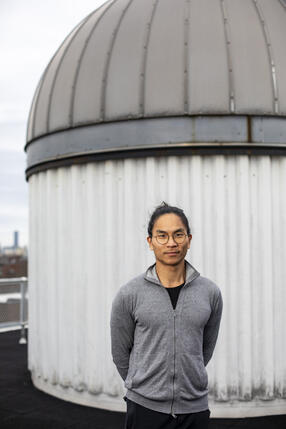
For his research, Han needed to understand the gravity of our galaxy and the LMC and know the present-day positions and velocities of them and the stars he was studying. We imagine galaxies as static, but, as Han observes, the LMC is actually falling into the Milky Way at a very high speed. “You might imagine that if you were to track back to where these stars came from, both our galaxy and the LMC were in different places,” he says. “So, we need to understand where they were in the past.”
Here Han got a big boost from the European space telescope Gaia, which measures the motion of stars. Gaia’s observations enabled Han and El-Badry to get the three-dimensional positions and velocities of the 21 stars in their sample group, as well as the past positions of the Milky Way and the LMC. Then, Han used statistical modeling to analyze the data, leading to his epiphany in the sky.
“If you calculate Newton's laws of motion back in time using this updated model and data, then half of the stars in our group confidently do not come from the center of our galaxy,” he says. “Instead, they go to the center of the LMC, our nearest neighbor.”
Han’s finding strongly suggests that the LMC is producing hypervelocity stars. And if that’s the case, the evidence points to an SMBH at the center of the dwarf galaxy. “We can use the observed properties of these hypervelocity stars to infer the properties, especially the mass, of a supermassive black hole at the center of the LMC.”
A Different Universe
El-Badry, second author of the paper published in the Astrophysical Journal, says the main takeaway of the study is that “a large fraction of hypervelocity stars, which for the last 20 years have been widely assumed to come from the supermassive black hole at the center of the Milky Way, actually come from the LMC.” While not definitive, Han’s evidence for a supermassive black hole in the Large Magellanic Cloud is very strong, according to one of his Harvard faculty mentors, Professor Lars Herquist.
“His model can account for the distribution of hypervelocity stars around the Milky Way, in particular the clustering of many of these stars near the constellation Leo, unlike all other proposed mechanisms,” he says. “Moreover, by reconstructing the orbits of these stars, Jesse is able to constrain the location of the SMBH, which he calls ‘LMC*,’ making it possible to test his hypothesis by direct observation of the inner regions of the LMC across a variety of wavelengths.”
Hernquist says the discovery could also help shed light on the connection between SMBH and galaxies.
Identifying a supermassive black hole (SMBH) in the Large Magellanic Cloud would help to extend our knowledge of the relationship between SMBHs and their host galaxies to galaxy masses much less than that of the Milky Way, offering a testing ground for theories of galaxy-SMBH co-evolution.
—Professor Lars Herquist
“By now, it is believed all massive galaxies likely contain a supermassive black hole at their centers,” he says. “However, the situation is less clear as we go down in galaxy mass. Identifying a SMBH in the Large Magellanic Cloud would help to extend our knowledge of the relationship between SMBHs and their host galaxies to galaxy masses much less than that of the Milky Way, offering a testing ground for theories of galaxy-SMBH co-evolution.”
Han agrees but also has a simpler answer for why the discovery matters.
“The LMC is our neighbor,” he says. “It’s the closest, within the gravitational potential of our galaxy. We might as well even call it part of the galaxy. We know it’s been there for many thousands of years. So, the question of whether the LMC has a supermassive black hole is nearly as intuitive a question as does our galaxy have one. And if the answer is yes, then that’s a different universe we live in.”
Get the Latest Updates
Join Our Newsletter
Subscribe to Colloquy Podcast
Simplecast


